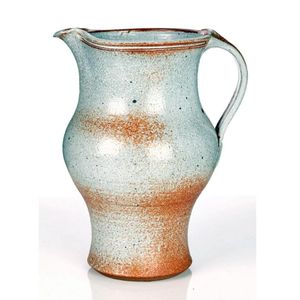George Yonge 18ct Gold Pocket Watch, London 1808
You must be a subscriber, and be logged in to view price and dealer details.
Subscribe Now to view actual auction price for this item
When you subscribe, you have the option of setting the currency in which to display prices to $Au, $US, $NZ or Stg.
- Fusee - The fusee movement was used in clocks and pocket watches from the mid 17th century. The fusee is a cone shaped drum within the works that is linked to the barrel of the spring, usually by a length of chain.
As the mainspring loses its tension over time, the cone shaped barrel compensates for this by increasing the tension, by pulling the mainspring tighter, thus ensuring the time remains constant.
Use of the fusee in clocks was superseded by the "going barrel" in the mid 19th century and for pocket watches at the beginning of the 19th century.
The fusee continued to be used in marine chronometers until the 1970s. - Movement - The technical name for the workings of a clock or watch, and does not include the dial or case.
- Pair Cased - A pair cased watch is one with a double case. The movement is encased, and for additional protection this is fitted into an outer case.
- Gilding - Gilding is a method of ornamentation whereby a thin sheet of gold metal is applied to items made of wood, leather, ceramics, glass and silver for decorative purposes.
For furniture including mirrors, the sheet of gold is usually applied over a coating of gesso. Gesso is a mixture of plaster of Paris and gypsum mixed with water and then applied to the carved wooden frames of mirrors and picture frames as a base for applying the gold leaf. After numerous coats of gesso have been applied, allowed to dry and then sanded a coat of "bole", a usually red coloured mixture of clay and glue is brushed on and allowed to dry, after which the gold leaf is applied. Over time parts of the gilding will rub off so the base colour can be seen. In water gilding, this was generally a blue colour, while in oil gilding, the under layer was often yellow. In Victorian times, gilders frequently used red as a pigment beneath the gold leaf.
Metal was often gilded by a process known as fire gilding. Gold mixed with mercury was applied and heated, causing the mercury to evaporate, the long-term effect of which was to kill or disable the craftsman or woman from mercury poisoning. The pursuit of beauty has claimed many victims, not the least of which were the artists who made those pieces so highly sought after today. - George Iii - George III (1738 - 1820) was King of Great Britain and Ireland from 1760 to 1820.
This item has been included into following indexes:
-
pocket watches, case type
- open face, gold / gold-plated case 1,339
- pair cased 156
- pocket watches, period - Georgian 258
Visually similar items

A handmade leather frame mirror with applied leaves, pods and native flora. The central panel with embroidered wool work, 82 cm high, 80 cm wide

Three volumes on Japanese Art, Ukiyo-e, Shraku and Honusai

Campbell Hegan, jug, stoneware with shino glaze. Impressed mark. Height 30 cm

A Chinese lacquer and hardwood screen, each of the four leaves set with hardstone animals and precious objects on various shaped panels on a ground of shell inlaid cruciform motifs, the reverse with gilt rondels of various designs - dragons, bears, birds,
